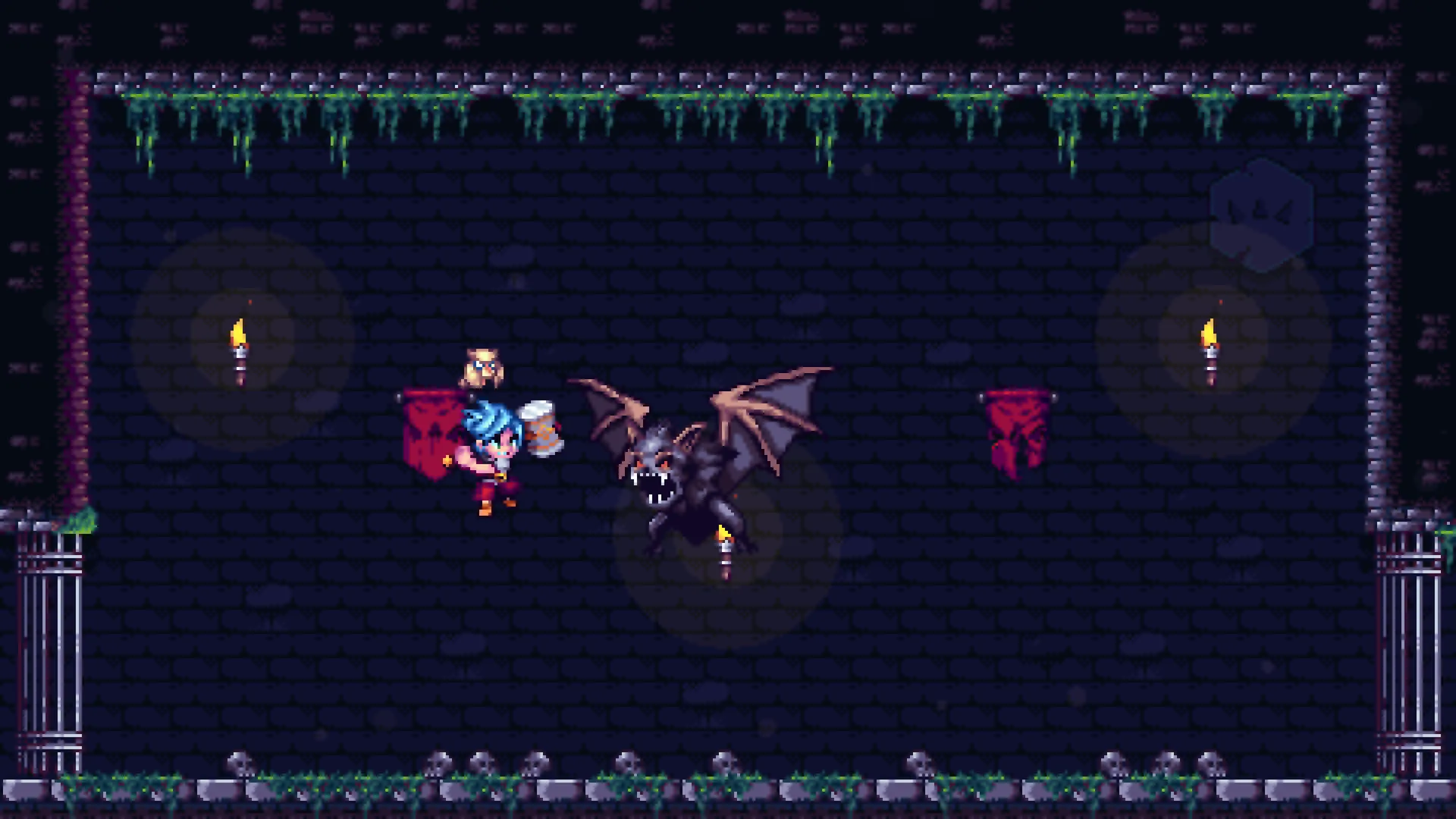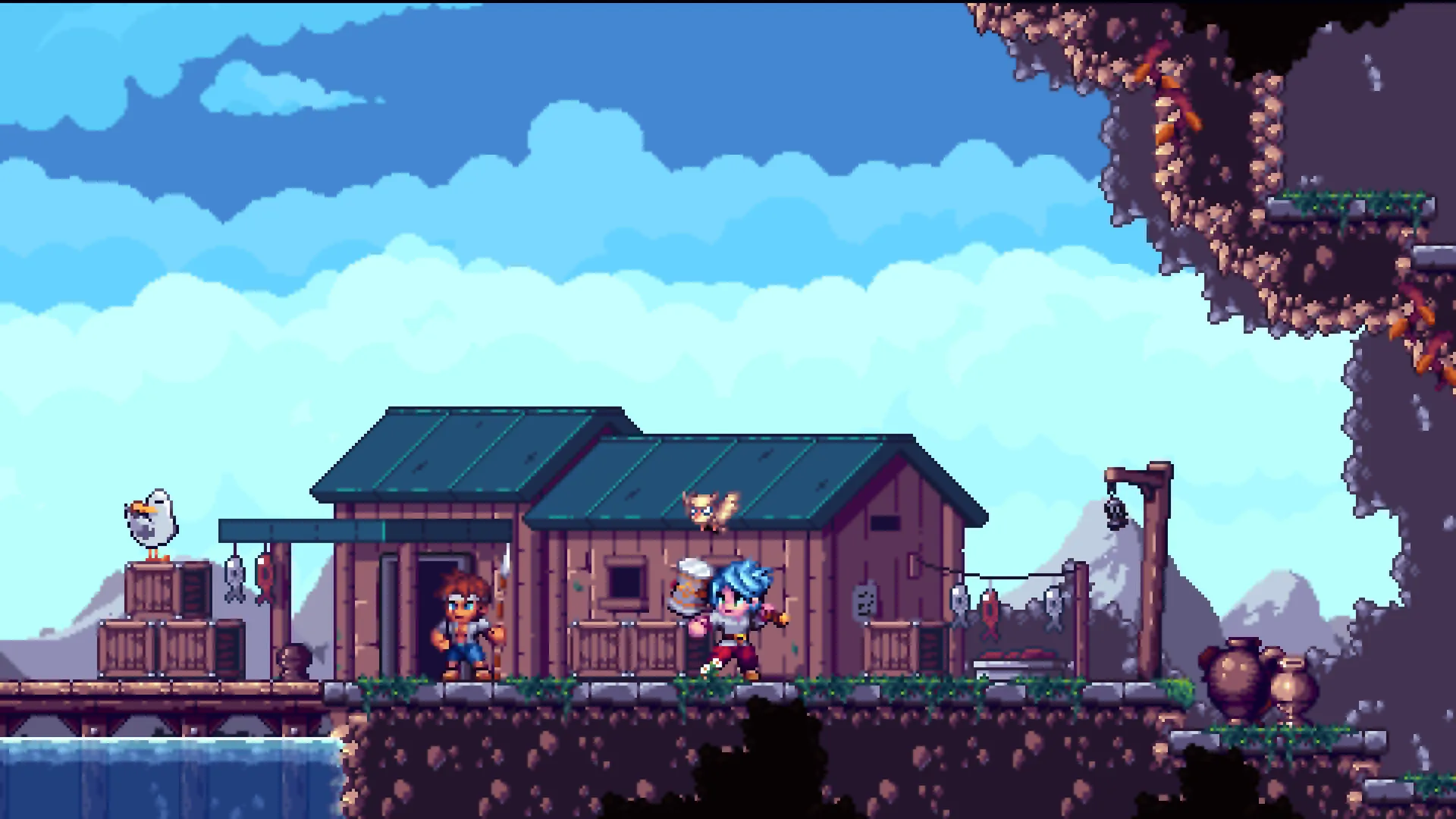From Uruguayan developer Isoca Games, “Wings of Endless” emerges as an action RPG deeply interwoven with 2D platforming, a combination that speaks to a global gaming heritage. The narrative commences with Hariku, a young, self-assured bounty hunter, whose initial mission—a seemingly straightforward delivery—spirals into a far grander undertaking.
This premise of an unexpected journey, populated by newfound companions and escalating challenges, is a narrative structure recognized across countless cultural storytelling traditions. The game’s aesthetic, a lovingly crafted retro-inspired presentation, evokes a sense of classic adventure, tapping into a shared nostalgia that transcends geographical borders and invites players into its meticulously constructed world.
Mechanics of an Adventurer
The player’s engagement with “Wings of Endless” is filtered through a trio of distinct protagonists: Hariku, Diana, and Makoto, whose archetypal roles—the sturdy warrior, the agile rogue, the elemental mage—are familiar figures in the global lexicon of fantasy. Hariku wields a hefty hammer, his combat a dance of stamina-managed combos and dodge-rolls, his mid-air strikes adding a verticality to encounters.
Diana, the mercenary, introduces ranged tactics with throwing knives and bombs, complemented by a stealth ability that allows for strategic repositioning, a nod to trickster figures in diverse folklores. Makoto, the mage-in-training, commands elemental forces, freezing or burning adversaries, and can encase himself in ice for defense, a visual representation of inner power harnessed.
The ability to switch between these characters with a quick trigger press is not merely a mechanical convenience; it fosters a tactical mindset, allowing benched members to recover health, reflecting a communal approach to overcoming obstacles, a theme often seen in ensemble narratives from cinema to epic poems. This strategic layer is complicated by a universal item cooldown, a design choice that demands careful resource management from the player, instilling a sense of consequence to each action.
Movement itself becomes a central puzzle, particularly with the owl companion, Owly, bestowing upon Hariku the crucial abilities of a double jump and a dash. This makes Hariku the primary navigator for a significant portion of the game, his enhanced mobility contrasting with Diana’s and Makoto’s initial limitations, creating an interesting dynamic where one character’s physical prowess becomes the key to the party’s progress through the often demanding environments.
The world is rife with precision platforming segments, where environmental hazards like spikes, toxic pools, and oppressively low ceilings test player dexterity. Such challenges form a kind of international language of game difficulty, though their successful negotiation provides a satisfaction that is universally understood. Progression is charted through a familiar system of experience points culled from defeated foes and discovered orbs, feeding into a leveling structure and skill trees for acquiring new abilities.
Equipment—weapons, armor, and accessories—further defines each character’s role. While armor and accessories can be shared, promoting a sense of collective resource, weapons remain unique to each hero—Hariku’s hammers, Diana’s knives, Makoto’s gems—underscoring their individual martial identities even within the cooperative framework.
Exploring the Lands of Plusaken
The world of “Wings of Endless,” known as Plusaken, unfolds as a series of diverse biomes, from ancient ruins and thorn-choked woodlands to arid deserts and frozen tundras. Each zone offers a distinct visual and thematic identity, a common technique in world-building that allows for a reflection of varied, albeit fantastical, ecologies, reminiscent of how different cultures portray the natural world in their artistic traditions.
These areas vary in their perceived scope, some feeling like intricate, contained dioramas, others offering a greater sense of breadth for exploration. This environmental storytelling is augmented by the lure of discovery, with secrets often hidden behind illusory walls—a classic game design motif that plays on the player’s curiosity, a universal human trait. Key collectibles such as Golden Feathers, which provide tangible stat boosts, and Owlguises, cosmetic costumes for the avian companion Owly, tap into player desires for both empowerment and personalization.
Movement between these distinct regions is facilitated by the Blue Balloon, a hot air balloon service. This diegetic travel system, requiring a membership card and stamped validation at each stop, integrates the notion of travel into the world’s fiction more deeply than abstract fast-travel points often do, perhaps reflecting a romanticized vision of journeying found in adventure literature across cultures.
Beyond the main path, towns feature notice boards posting side quests. These tasks, ranging from monster culling to item retrieval or even recruitment for local endeavors, serve to flesh out the world, encouraging players to revisit established locales and engage with the game space beyond the primary narrative thrust, much like subplots in a novel add texture to its central themes.
A Trio’s Tale and Feathered Friends
The narrative impetus for Hariku’s journey begins with his assigned task to retrieve a special treasure from the Abandoned Ruins for delivery to the Tower of Mages. This “treasure” materializes as Owly, a sapient, somewhat cantankerous owl.
Hariku’s character, the self-styled “best bounty hunter,” carries an air of youthful confidence, perhaps bordering on naivety, a common starting point for protagonists in bildungsroman narratives found worldwide. His party soon expands to include Diana, a skilled mercenary with an enigmatic past, and Makoto, a diligent trainee mage. The interactions between these characters, each embodying familiar archetypes, form the core of the group dynamic.
Owly is more than a mere talking animal, a figure prominent in global folklore; he is a direct enabler of gameplay, granting Hariku enhanced movement capabilities essential for navigating Plusaken. He also offers counsel at save points, acting as a guide and, at times, a Socratic commentator on the unfolding events. The ability for players to adorn Owly with various “Guisowls”—disguises for the owl—injects a moment of playful interaction, a lighthearted counterpoint to the more serious challenges.
The game’s story seems to cultivate a personal adventure feeling, focusing on the growth and camaraderie of its immediate cast rather than a world-shattering epic. This preference for smaller, character-focused narratives can be seen as a parallel to certain cinematic or literary traditions that favor intimate human stories over grand, impersonal sagas.
Sights and Sounds of Adventure
“Wings of Endless” presents its world through a charming and vibrant 2D pixel art style. This visual approach is not merely nostalgic; it is a distinct aesthetic choice that resonates with a global audience familiar with the 16-bit era, yet it is rendered with a modern clarity and detail.
The careful crafting of sprites and environments creates a world that feels both familiar and fresh. Enemy designs show considerable variation, often unique to their respective biomes, which enhances the sense of exploring a biologically diverse, if fantastical, world. Certain visual elements, like well-camouflaged traps or specific enemy placements, speak to a design philosophy that values keen observation from the player.
The auditory landscape of the game significantly shapes the player’s experience. The soundtrack adapts to the diverse locales, with jovial tunes in safe havens giving way to more urgent, rhythmically driving pieces during tense boss encounters—a common cinematic technique to score emotional beats.
Sound effects punctuate actions effectively, though some, like a particularly strident low-health alarm, can create a dissonance, a moment where the game’s attempt to signal danger might become an irritant. Together, the visuals and audio create an atmosphere thick with the promise of exploration and discovery, successfully drawing players into its carefully constructed reality.
The Review
Wings of Endless
"Wings of Endless" offers a heartfelt journey through a beautifully pixelated world, successfully marrying familiar RPG tropes with engaging character-driven storytelling. While its demanding platforming and classic mechanical challenges may test patience, the diverse environments, charming presentation, and the rewarding sense of personal adventure create a memorable experience that resonates with a global appreciation for nostalgic yet thoughtfully crafted interactive narratives.
PROS
- Beautifully crafted retro pixel art and charming overall presentation.
- Engaging, personal story focusing on character dynamics and adventure.
- Diverse and visually distinct world design that encourages exploration.
- Tactical character-switching combat system offering strategic depth.
CONS
- Demanding platforming sections can sometimes lead to frustration.
- Certain game mechanics, like universal item cooldowns, may feel overly punishing.
- Occasional steep difficulty spikes can interrupt the gameplay flow.
- Some sound design choices might be jarring or detract from immersion.


















































